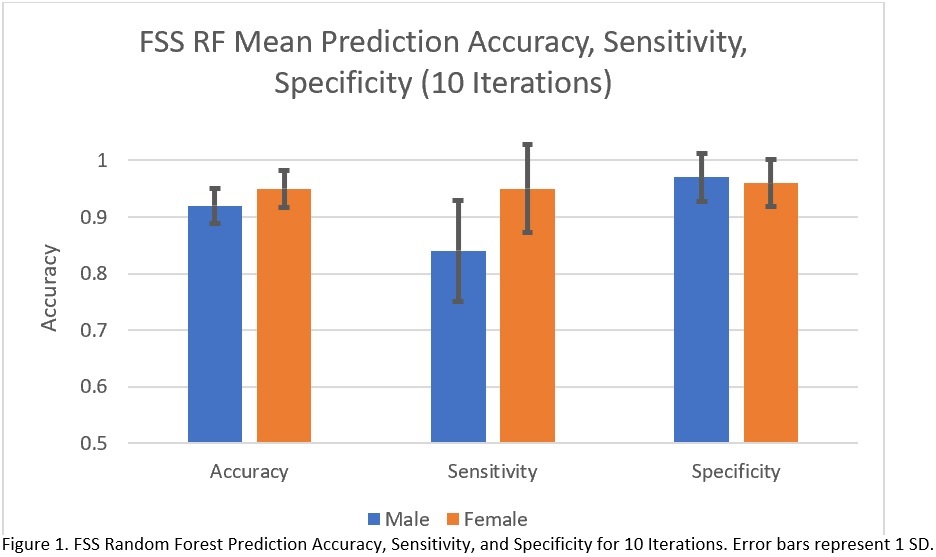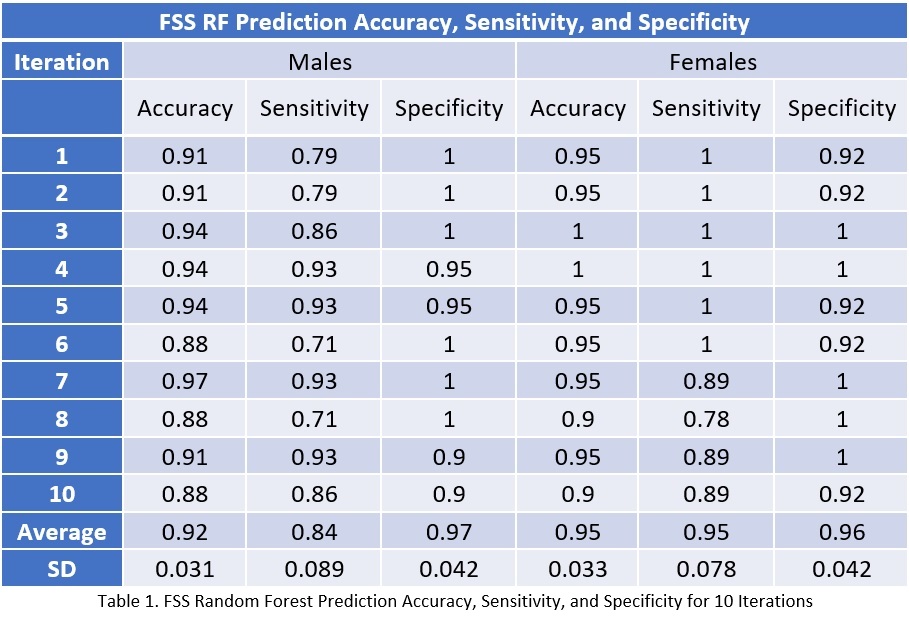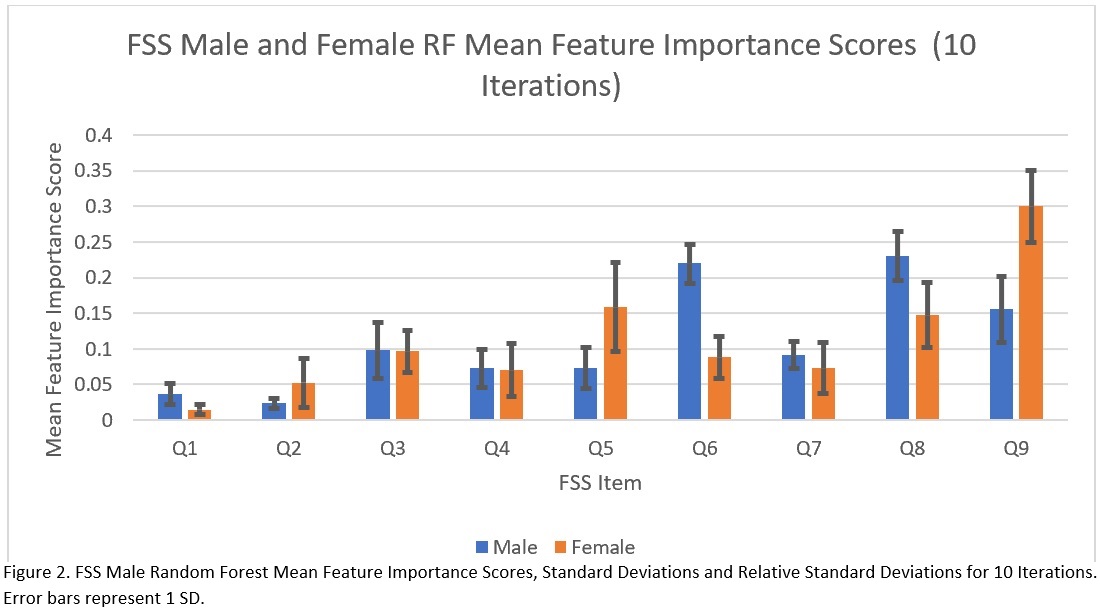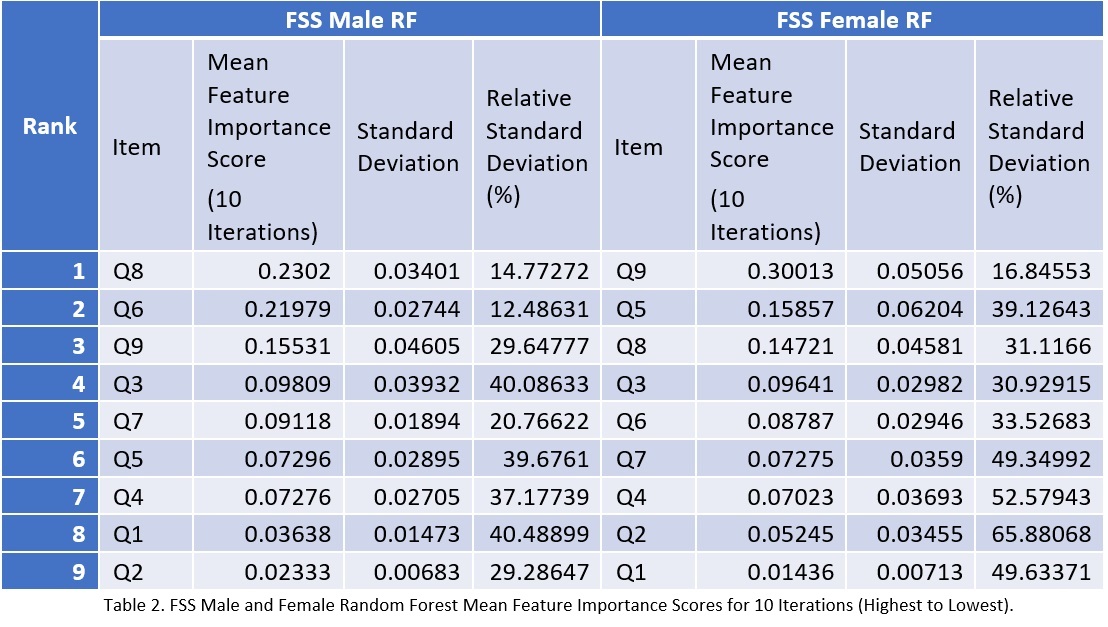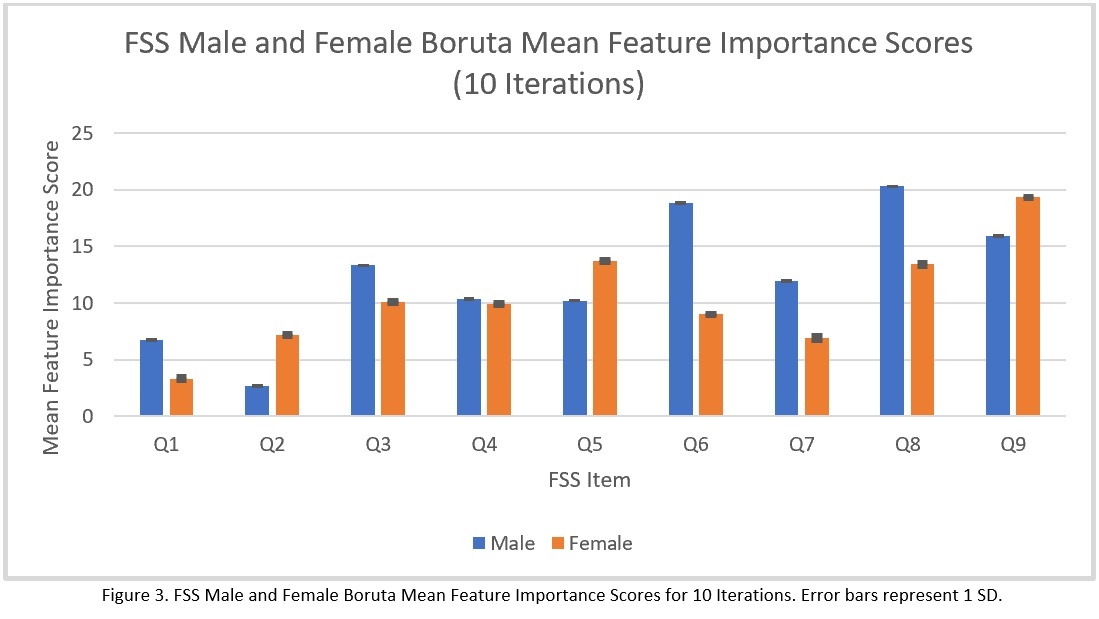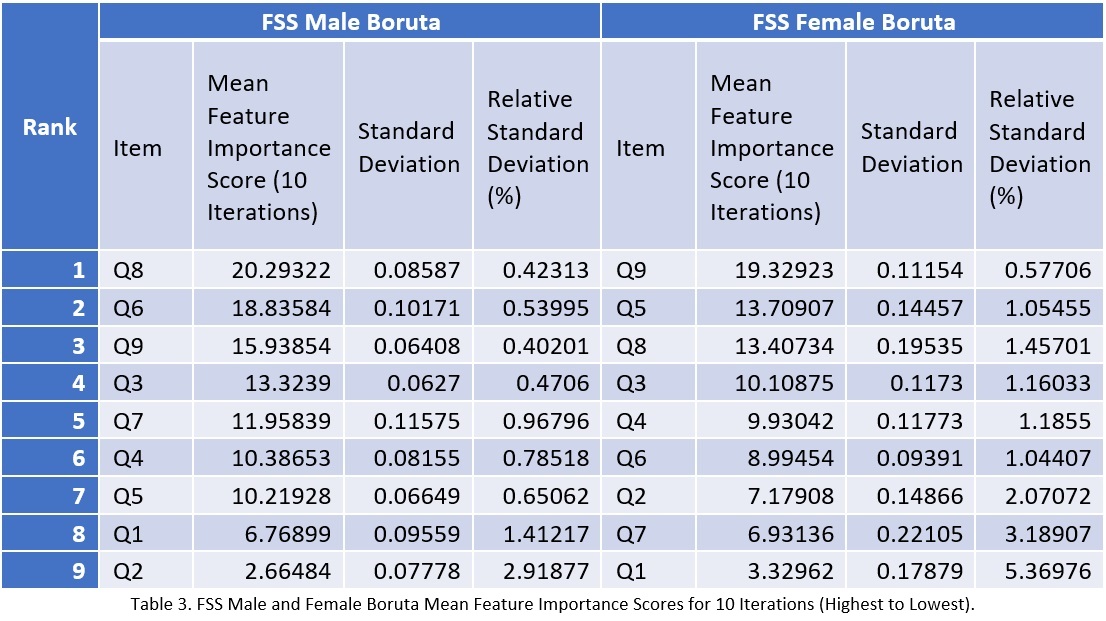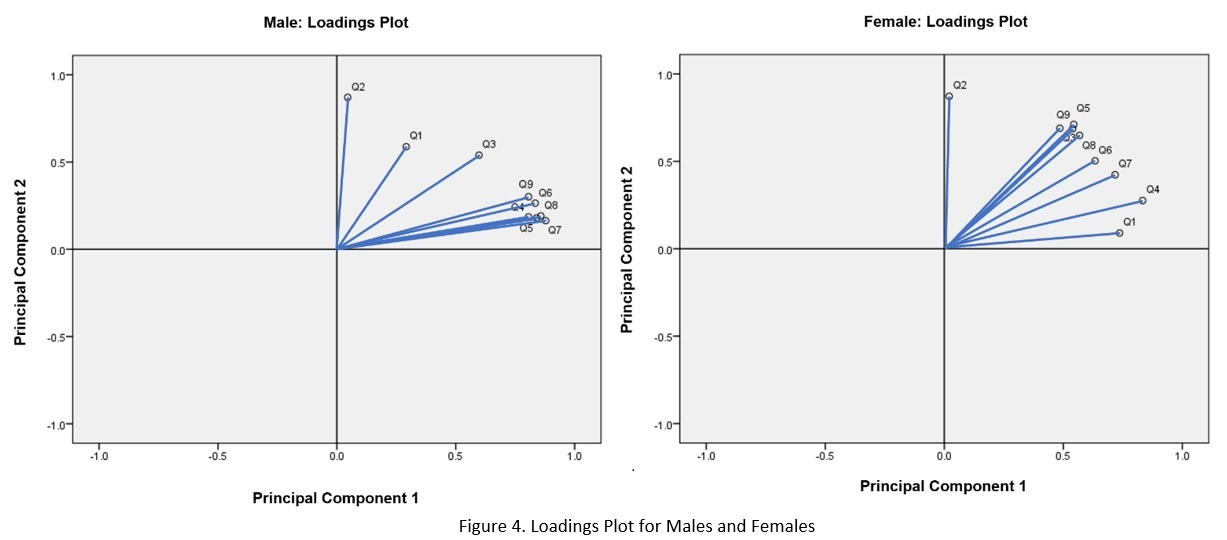Category: Parkinson's Disease: Non-Motor Symptoms
Objective: The overall aim of this study is to identify which items of the Fatigue Severity Scale (FSS) best predict clinically significant fatigue in male and female Parkinson’s Disease (PD) patients comparing two different statistical analysis methods: random forests and Boruta.
Background: Numerous non-motor symptoms are associated with PD including fatigue. The challenge in the clinic is to detect relevant non-motor symptoms while keeping patient-burden of questionnaires low and to take potential subgroups such as sex differences into account. The FSS effectively detects clinically significant fatigue in PD patients. Machine learning techniques can determine which FSS items best predict clinically significant fatigue yet the choice of technique is crucial as it determines the stability of results.
Method: 182 records of PD patients were analyzed with two machine learning algorithms: random forest (RF) and Boruta. RF and Boruta calculated feature importance scores, which measured how much impact an FSS item had in predicting clinically significant fatigue. Items with the highest feature importance scores were the best predictors. Principal components analysis (PCA) grouped highly related FSS items together.
Results: RF, Boruta and PCA demonstrated that items 8 (“Fatigue is among my three most disabling symptoms”) and 9 (“Fatigue interferes with my work, family or social life”) were the most important predictors. Item 5 (“Fatigue causes frequent problems for me”) was an important predictor for females, and item 6 (“My fatigue prevents sustained physical functioning”) was important for males. Feature importance scores’ standard deviations were large for RF (14%-66%) but small for Boruta (0%-5%).
[figure1]
[table1]
[figure2]
[table2]
[figure3]
[table3]
[figure4]
Conclusion: The clinically most informative questions are how disabling fatigue is compared to other symptoms and interference with work, family and friends. There are some sex-related differences with frequency of fatigue-related complaints in females and endurance-related complaints in males yielding significant information. Boruta but not RF yielded stable results and might be a better tool to determine the most relevant components of abbreviated questionnaires.
To cite this abstract in AMA style:
DG. Lee, M. Mirian, L. Adrian, A. Yu, S. Neilson, K. Sundvick, E. Golz, L. Folger, S. Appel-Cresswell. Data-driven prediction of fatigue in Parkinson’s disease patients [abstract]. Mov Disord. 2021; 36 (suppl 1). https://www.mdsabstracts.org/abstract/data-driven-prediction-of-fatigue-in-parkinsons-disease-patients/. Accessed April 20, 2025.« Back to MDS Virtual Congress 2021
MDS Abstracts - https://www.mdsabstracts.org/abstract/data-driven-prediction-of-fatigue-in-parkinsons-disease-patients/

